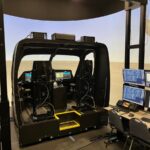Inside the pine woods of Louisiana, JRTC stands as one of the Army’s toughest proving grounds. Brigade Combat Teams and Special Forces Detachments roll through every month. Crews throw themselves into hard fights, urban clearings, swift vehicle pushes, and tight raids after dark. Cubic’s deal keeps that machine spinning, with newer tech and sharper scenarios waiting for each rotation.
JRTC in the Big Picture
Fort Polk’s sprawl serves a blunt purpose: expose units to shock, stress, and confusion that feels, almost, like real war. Thick forest lines slice radio range, small villages hide mock foes, and weather flips from muggy heat to cutting rain in one day. Teams must push through with limited sleep and short prep. Controllers hit them with curveballs around any bend. The goal stays clear—find gaps, seal them fast, then test again.
That pattern forged a strong name for JRTC across the force. Many brigade leaders credit one tough rotation for trimming sloppy staff habits and waking young soldiers up to battlefield pace. Success there rarely shows up as perfect runs. Instead, it looks like squads that bounce back quick after wrong turns, fix comms breaks on the fly, and keep morale up when blinks of chaos land.
What the Contract Covers
Cubic’s extension lays out four broad pillars that hold the training together:
- Role Play Cells. Hired locals and vets slip into parts as villagers, insurgents, or civil officials. Soldiers must parse mixed signals, broker deals, and face threats that shift fast. A missed cue in the talk can send a patrol into danger two streets later.
- Battlefield Effects. Teams on site fire off charges, flashbangs, and over-the-ridge sound rigs. Those hits echo real artillery or a buried IED boom. Smoke drifts over tree lines, vehicles cook off beside roadsides, and the noise alone rattles first-timers.
- Tactical Engagement Systems. Sensors clip onto rifles, helmets, and vehicles. Lasers mark shots, receivers tally wounds. Data streams live to control tents, letting observers flag shaky movement or late flank cover within minutes, not hours.
- Exercise Support Groups. From sling-load pallets to fuel truck runs, Cubic keeps supplies flowing. Aircraft tasking, convoy routes, ammo counts, and blank-to-live shifts all run through one nerve center. Units feel the weight of true logistics without risking real war stocks.
Each part blends into the next. A town flare at dawn may cue a flood of small drones overhead. Those drones, rigged with TES pods, feed hits back into the scoreboards. After the dust clears, leaders pull around digital tables and chew through every slip, every smart risk, and the odd lucky break.
Daily Grind for Cubic Applications Inc.
Cubic Applications Inc., the hands-on branch, places techs, planners, and field actors on the ground. They rewrite scripts weekly to match new global briefs. Some of these briefs now include early-stage Army testing of virtual rotorcraft like the MV-75 FLRAA prototype, delivered by Bell Textron. If current intel hints at novel drone swarms or odd cyber jabs, the next cycle at Polk mirrors that twist. Staff adjust sensor code, re-map villages, and brief the opposition force so that fresh tactics punch hard on day one.
The same mindset rolls over to Little Rock Air Force Base where CAI handles airlift drills. There, crews practice quick, low-level cargo drops and tight-spot landings under mock fire. Though terrain changes, the rulebook stays: realism first, never comfy.
Building Tougher Formations
Senior Defense brass view live training as their chief hedge against future fights. Paper plans can shine, but only real dust and sweat reveal thin seams. JRTC’s script forces companies to merge fires, intel, medevac, and sustainment under ticking clocks. Mistake early, adjust, then run it right the next lane. That grind molds sharper sergeants, steadier lieutenants, and staffs that breathe in sync.
Nothing there repeats. One dusk mission may demand riot control at a city square, complete with actors hurling bottle props across barriers. Dawn could switch to armor push on soggy ground, tracks bogging, and air scouts calling enemy tank vics two ridges out. Cubic’s crews stitch each pivot into place, so troops never settle into pattern.
Stepping Up Innovation
The new agreement sets cash aside for upgrades along the way. Cubic will roll in better analytics tools for after-action picks, bump sensor resolution, and widen cultural layers inside role play. Digital overlays now pop onto soldier visors, marking unseen UAV flights or artillery fans above. While every footstep still happens on Fort Polk soil, added data clouds the headspace like real multi-domain fray.
Cubic keeps pace by leaning on decades of lab work and field tweaks. Engineers test small patches at home stations, then push stable builds into Polk lanes. That cycle repeats every quarter. It saves downtime, yet lets wild ideas find proof quick. Many of those tweaks later slide into export kits for allies who share doctrine roots with the U.S.
Private Partnership Trend
Analysts chalk Cubic’s rise to a larger curve in defense: tight budgets and broad ops steer services toward private niches. Firms shoulder parts of the load that once drank uniform manpower. Results cut both ways. The Army frees troops for direct mission prep; industry gets live labs to sharpen products that may cycle back into procurement loops.
Some gear first formed as JRTC toys—like compact TES nodes—now sit packed in crates bound for allied campuses overseas. That spread loops fresh feedback to Cubic, which in turn injects new code or hardware into Polk lines. The circle keeps rolling, feeding constant refresh.
Fort Polk’s Ground Truth
The post roots reach World War II, yet the landscape still stings modern legs. Dense pines choke sight lines, bayous slow armor, and heat claims energy in hours. Cubic’s sensor nets drape through this wild mix. Each badge tag tracks a soldier’s exact burst count, wound type, and movement path. Review screens light up in real time. Controllers flag sloppy bounding while the fight still roars, nudging squad leads on open radio.
Observers, drawn from across the Army, watch like hawks. They scribble time stamps, then gather platoons under shade tarps right after cease-fire. Feedback lands direct, unpadded. Next mission kicks off soon after, so fixes must stick quick or pain returns.
Forging Future Leaders
Ask a captain who walked Polk lanes, and many will flash back to one punishing night raid or a mis-read village meet. Those memories etch habits that stick through later deployments. They trust maps less than eyewitness word, keep spare batteries dry in sandwich bags, and drill back-briefs before stepping past wire. Small things, often learned the hard way under Cubic’s smoke pots.
The Army bets heavy money that such lessons save lives later on. Extending Cubic’s run means these teaching moments won’t thin out. Instead, refinements will deepen realism, tailoring frictions to spikes seen in real theaters each year.
Cubic’s Wider Horizon
Beyond Polk, Cubic hunts new ties with partner nations. Australian diggers, British infantry, and Baltic brigades have tapped its mobile TES packs in recent seasons. Each fresh field adds data sets, showing how kit holds up in desert dust or alpine chill. That evidence loops back to engineers back home.
Environmental duty rides alongside. Fort Polk shelters fragile wetlands, so setup crews tread with care. Trenches, blast pits, and road spurs follow strict eco codes. Cubic works with base biologists to plant grass mats over churned soil and to time heavy pyros around nesting seasons. Good stewardship pays forward by sidestepping costly site repairs and ensuring training keeps legal cover.
Wrap of the Core Deal
The 468 milion tag headlines big numbers, yet the heart of this move sits in constant readiness. Cubic’s instruments forge chaos on demand; soldiers learn calm under it. The Army, in turn, gains units that think faster and shoot straighter when orders shift mid-stride. That loop, tested since 2007, rolls on firm ground.
Key Takeaways
- Ten-year horizon locks funding and focus
- Four service pillars knit realism from village street to ops tent
- Live data cuts feedback lag to minutes, not days
- Eco safeguards keep Polk ranges green for next waves
New TESS Chapter Arrives
March 2025 saw another contract fall Cubic’s way, separate yet linked. A ten-year IDIQ under PEO STRI hands the company broader reins over Tactical Engagement Simulation Systems worldwide. The Army leans harder on data-driven drills now, and TESS slots in neatly.
Early field numbers count one-hundred-eighty-thousand plus devices shipped so far. Fresh batches will carry lighter batteries, tighter beam cones, and quicker sync with handheld review tablets. Home-station posts from Alaska to Italy can tap this tech, cutting travel loads when budgets pinch, while still training under hit-tracking eyes.
Planners speak of a seamless mesh: Polk’s dense forests plus TESS overlays at hometown ranges equal a continuum where lessons picked up down south remain polished back on garrison turf. For soldiers that means fewer cold starts each rotation.
Shifting Toward Networked Fights
Modernization teams eye even broader mesh links. Imagine role players wearing TES rigs that feed vibes, voice, and GPS pings into command sand tables live. Staff can tug in remote analysts who watch pattern spikes and push instant tips to squad pads. Cubic’s dev charts hint at this fusion, mixing 5G slices, edge servers, and AI-lite scripts that spot repeating exposure arcs in routes.
While some of that still rests in lab bays, early demos show promise. One trial last winter had a platoon in thick pines flagged for four near-identical formation shapes inside twenty minutes. An algorithm nudged the platoon leader mid-mission, who swapped movement order and cut casualties by a quarter in next contact.
Watching Cost and Value
No training build stays cheap. Pyro loads, drone fleets, and laser grids drain funds quick. Yet Army auditors point out that prepping a brigade wrong costs far more once boots hit a real fight. By sinking dollars into live-fire surrogates and digital kill chips now, the force trades budget line pain for blood saved later.
Cubic rides that argument while hustling to keep per-rotation bills stable. Mass-produced TES chips, modular battery packs, and software updates that push over air instead of manual flash all trim expenses year by year. Those savings loop back, letting planners buy broader scenario sets without begging Congress for spikes.
Eyes on the Next Decade
Threats morph fast. Swarms, hypersonic missiles, and gray-zone meddling all demand new playbooks. The Army knows JRTC alone can’t model every twist, but with Cubic as partner it can pivot fast. Need a port cyber breach lane next quarter? Scriptwriters carve it in. Require a drone sniper cell that pauses GPS for five minutes? Engineers set the toggles.
By 2030, many foresee a blended polygon where VR helmets sync with live blanks, and distant allies drop into the same lane through holographic proxies. Polk’s woods may host digital ghosts tagging along side by side with flesh troops. The aim remains unchanged: stress squads until they break habits, then run them hot again until new instincts lock solid.
Final Glance Forward
Cubic’s twin wins—the long JRTC extension and fresh TESS IDIQ—plant steady stakes through 2035. Soldiers can count on thick smoke, loud bangs, and ruthless feedback waiting in Louisiana, matched by smart lasers blinking across home ranges. That blend sharpens steel, trims fat processes, and keeps American formations a step quicker than foes hunting edges.
For the company, each field day cements its reputation and seeds the next contract bid. For the Army, each lesson learned under safe but stern conditions seals holes before they gape overseas. The path ahead is messy, no doubt, yet with solid ground underfoot and clear eyes on evolving tech, the partnership seems set to navigate it without missing stride.
REFERENCE SOURCES:
- https://www.halldale.com/defence/cubic-secures-decade-long-army-contract
- https://www.rttnews.com/325078/cubic-granted-potential-468-mln-contract-to-supply-mission-support-to-army-jrtc-quick-facts.aspx?Arch=1
- https://www.militaryaerospace.com/home/article/16725152/cubic-corporation-receives-potential-468-million-contract-to-supply-mission-support-to-us-army-joint-readiness-training-center
- https://www.annualreports.com/HostedData/AnnualReportArchive/c/NYSE_CUB_2007.pdf
- https://www.asdnews.com/news/defense/2025/03/26/cubic-awarded-bridge-enduring-ste-tess-multipleaward-contract-best-mac-idiq
- https://www.cubic.com/news-events/news/cubic-awarded-bridge-enduring-synthetic-training-environment-ste-tactical



